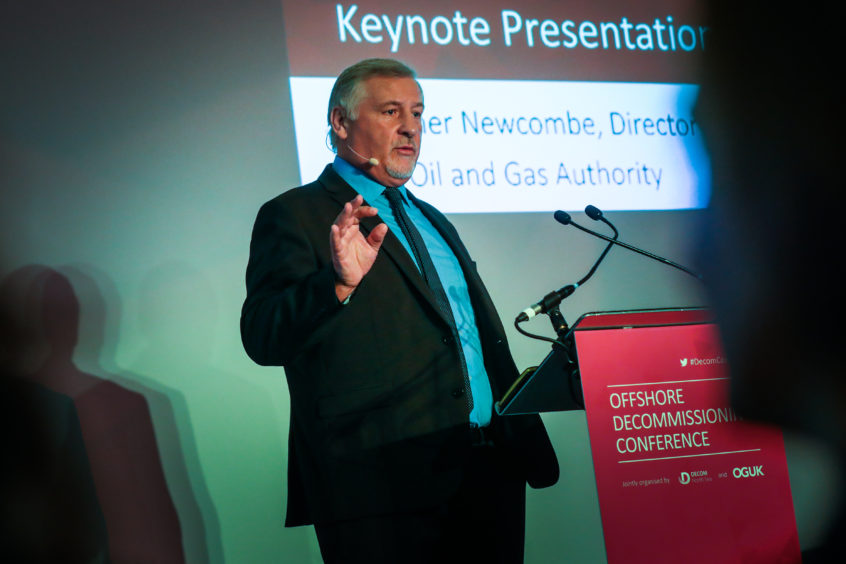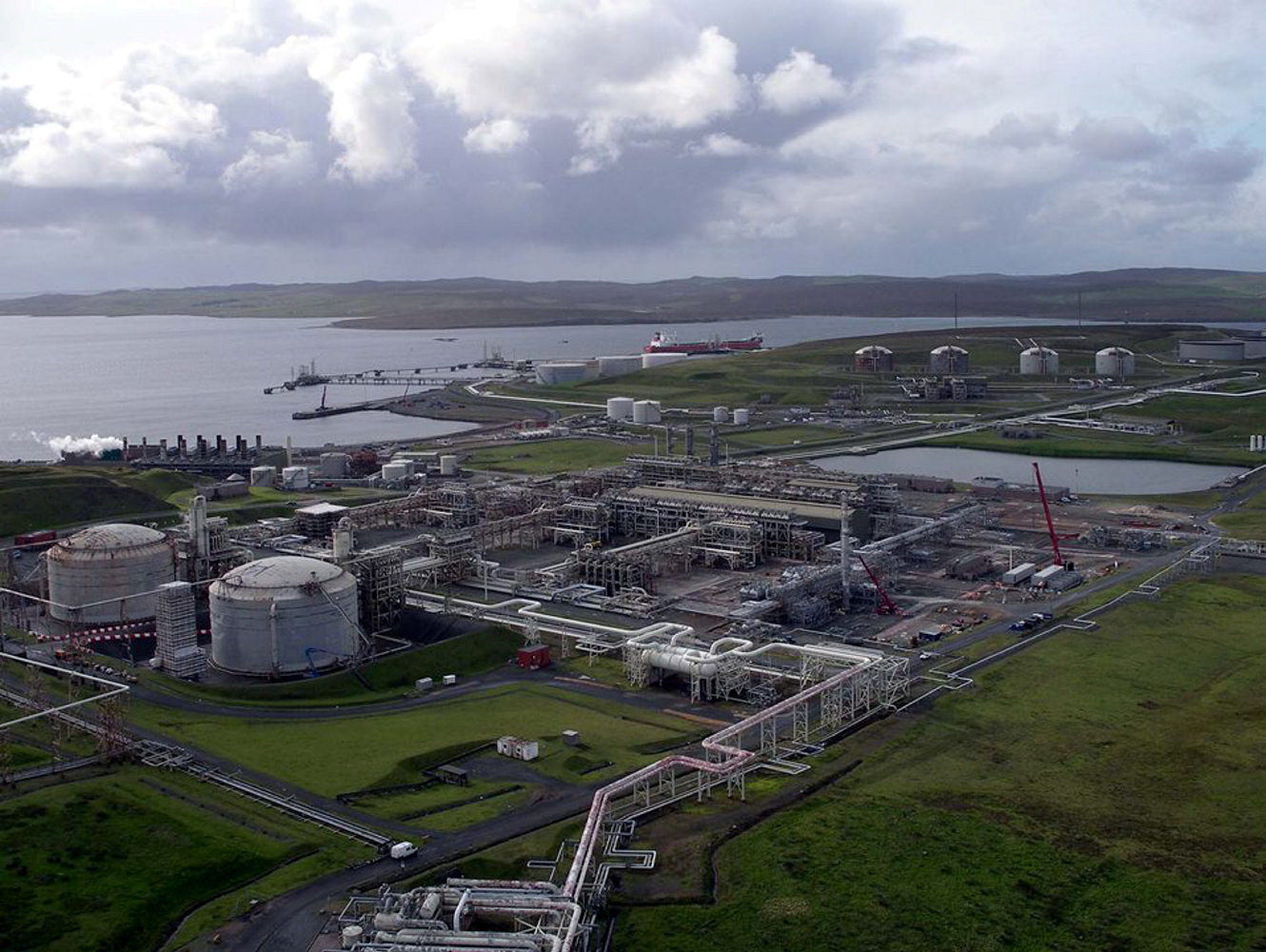
West of Shetland operators are working with “serious intent” to get huge new oil projects “to a net zero outcome”, according to the head of a major clean energy scheme on the islands.
Gunther Newcombe is the project leader on Orion (Opportunity Renewables Integration Offshore Networks), announced last year as the “Shetland Energy Hub” with aspirations to turn the islands into a green energy beacon.
BP, Equinor, Shell, SSE, Total, EnQuest, Shetland Islands Council (SIC) and OGTC are all part of a steering group meeting monthly to oversee Orion, which seeks to build out offshore wind, hydrogen and platform electrification around Shetland.
The latter is “the most crucial” in the near-term and immediately focused on the west.
Newcombe heads the team, contracted out by SIC, having formerly been operations director at the Oil and Gas Authority (OGA), and recently awarded an OBE for his 40-plus year career in the sector.
Orion, primarily an OGTC- SIC partnership, supports a dedicated operator group of BP, Equinor and Siccar Point Energy “looking at west of Shetland more holistically” as they aim to sanction their respective Clair South, Rosebank and Cambo projects in the coming years, collectively representing billions of barrels of oil.
Newcombe said: “I would say there is serious intent to actually look at solutions to get to a net-zero outcome for the new developments west of Shetland, like Clair South, Cambo and Rosebank. All of those operators have that ambition.
“I would have thought any new development in the UK, let alone west of Shetland, needs to have a pretty good strategy for reduced emissions or actually net zero for it to be even sanctioned.
That’s “sanctioned by their own companies, sanctioned by investors, and sanctioned by the OGA”, he clarified, referring to the regulator’s net-zero requirements.
Onshore wind – including the 450MW Viking Energy wind farm coming online in 2024 and the new 600MW mainland interconnector acting as a backup – will be a “critical enabler” for west of Shetland electrification, according to Newcombe.
Thereafter, plans for gigawatt-scale offshore wind will be “prime candidates” to supply power for electrification projects.
According to Orion research, projects west of Shetland, also including Glen Lyon and the first two phases of BP’s Clair field, would require a combined 194MW to electrify.
“Having a solution pre-2025 is quite important and is a driver”, Newcombe said.
“Obviously for that to happen, the operators need to work with the energy providers via Shetland to actually make that happen.
“That’s an ongoing discussion, there are regulatory issues, there are issues around the cost of supply and technical issues – those are all part of the discussions of the workgroups and wider JV conversations.”
Although electrification is the most immediate Orion task, it is just one part of a mosaic of green energy plans for Shetland which will ultimately require billions of pounds of investment.
As a hub, Shetland is unique in having almost “all of the components”, Newcombe said, from oil and gas infrastructure, to offshore wind potential, to industrial land, and a skilled workforce.
“It’s got loads of stuff but actually a lot of it can be replicated”.
Orion changed its name to better reflect the wider impact on the sector, with the chance to replicate its work elsewhere in the UK and further afield.
“That’s the other thing that’s important here – this isn’t just about Shetland,” Newcombe said.
“Obviously the product might hit the beach on the Scottish mainland, but it’s all about supply chain in the north-east of Scotland as well being involved.”
‘Really dependent on industry and investors’
All told, for full electrification (to the west and brownfield projects to the east), full offshore wind development, green hydrogen and utilisation onshore, Newcombe estimates somewhere in the region of a huge £5-10 billion investment is needed.
It is “really dependent on industry and investors actually instigating projects”, he said, adding, “what Orion is trying to do is to stimulate that, and to coordinate that and to shape that”.
The timelines, he argues, “fit quite well” with aggressive government targets on offshore wind, hydrogen and net zero more broadly.
Newcombe likened Orion to an incubator: “What we want to make sure is that projects are integrated, coordinated and are optimised.
“Orion is this bubble, if you like, that sort of tries to drive the package forward.
“As we move it forward, it may well come into discrete projects that have their own dynamic, their own governance, their own finance.
“An example of that could be west of Shetland electrification. Once it’s launched and actually is a project well, hey, the egg has hatched.”
Offshore Wind
Shetland is “really well-placed to take offshore wind at gigawatt (GW) scale” and use those turbines to produce green hydrogen, Newcombe said. Repurposing oil platforms as offshore hydrogen plants is also part of the vision.
Newcombe’s presentation on Orion includes hopes for 5-10GW to be unlocked around the islands through measures such as the recent ScotWind leasing round.
Wind developers have set their hopes high for the round – the Port of Cromarty Firth compared it the start of the North Sea oil boom in the 1970s and said it could create a “50-year pipeline of work”.
Developers like Orsted have already made known their intention to bid and the Scottish Government hopes ScotWind will help it towards the goal of doubling consented offshore capacity, currently at 5.6GW, to 11GW installed by 2030.
Just 1GW was operational across Scotland as of October, giving some sense of the scale of Orion’s ambitions.
Green Hydrogen
Green hydrogen at scale, helping replace Shetland’s reliance on fossil fuels, is another pillar of Orion, which ultimately hopes to see Shetland exporting that fuel across Europe.
Sullom Voe Terminal, with 50% of the site’s industrial land still unused, is envisioned as the export site for hydrogen across Europe via tanker, or blending it into pipelines, such as those running from Shetland to St Fergus in Aberdeenshire.
Operator EnQuest is “very much engaged” with Orion, Newcombe reports, though discussions on such a build-out are not live yet.
However, with Viking Energy coming online, electrifying the port and parts of SVT is potentially on the cards in coming years.
“It makes a lot of sense to utilise that region around Sullom Voe Terminal. EnQuest and Total are very much engaged with the conversation of Orion.
“Are there any firm plans at the moment to say ‘let’s build this, that, or the other?’ No.
“But the teams are talking about how we electrify bits of the port facilities, how we can electrify some of the Sullom Voe facilities on the back of renewable energy.
“When Viking wind farm becomes operational in 2024 then the energy provided on the island will come from renewables. So can we electrify things that currently run off the back of gas, for instance? That’s a live conversation going on right now.”
Shetland doesn’t currently have any hydrogen right now so to get some pilots going to start production in 2024 “is quite an important milestone”.
To do that, Orion plans to work with local businesses and look to the UK and Scottish governments for incentives to “make that happen”.
More broadly, next steps for Orion are to move “from paper to projects”, with engagement with the supply chain on concept and feasibility studies with the aim of shaping pilot projects and, potentially, more advanced developments.
Ambition
The overall aim is to switch Shetland’s reliance from fossil fuels to clean energy – around 10% of the 12,000 jobs on the islands are related to the sector.
Sustaining those jobs, plus adding 20-30% by way of clean energy projects, is the long-term aim for the scheme, having touted a 1,700 jobs figure in summer 2020.
The science behind these calculations is “flaky”, Newcombe conceded, but working with institutions including Aberdeen University, University of Highlands and Islands, Strathclyde University and Highlands and Islands Enterprise, the plan is also to create new skills and attract new people.
There’s no denying the ambition, but the North Sea and Shetland have had big promise projects before that did not manifest themselves.
However, with OGTC, SIC and others backing it, Newcombe highlighted that the industry is collectively capable of achieving great things.
One example comes from his own history at BP, working to build the 1,700km (1,000mi) Baku-Tbilisi-Ceyhan (BTC) pipeline while working in Azerbaijan.
“Obviously it was incredibly ambitious to build a 1,700km pipeline from Baku over Georgia, over the mountains, down into Turkey.
“It had massive social impact as well in terms of jobs for people of that region, thousands of jobs, and in terms of providing energy for many people.”
Orion is not of the same scale, but there’s at least one other big ticket project planned for the islands.
“Shetland is going to have a space station with Lockheed Martin launching in maybe two or three years’ time”, he said.
“We always liked Orion reaching for the stars. Well, the space station would be reaching for the stars literally. There is quite a bit of innovation there.”


